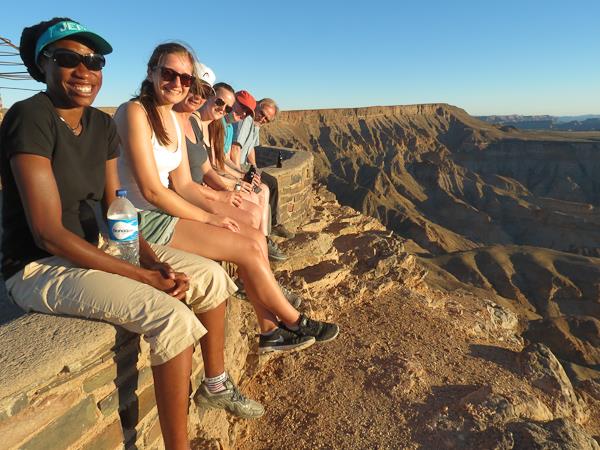Namibia officially the Republic of Namibia, is a country in Southern Africa. Its western border is the Atlantic Ocean whose capital is Windhoek. It shares land borders with Zambia and Angola to the north, Botswana to the east, and South Africa to the south and east. With a surface area of 824,290 square kilometers, it is similar in size to Mozambique.
The current population of Namibia is 2,678,709 as of Monday, July 3, 2023, based on Worldometer elaboration of the latest United Nations data.
Hage Gottfried Geingob is serving as the third president of Namibia since 21 March 2015, is the head of state and the head of government of Namibia, as well as the commander-in-chief of the armed forces, according to the Constitution of Namibia.
It is the driest country in Sub-Saharan Africa and is rich in mineral resources, including diamonds and uranium.
Political stability and sound economic management have helped anchor poverty reduction and allowed Namibia to become an upper-middle-income country. However, socio-economic inequalities inherited from the past apartheid system remain extremely high, and structural constraints to growth have hampered job creation.
Agriculture in Namibia contributes around 5% of the national Gross Domestic Product though 25% to 40% of Namibians depend on subsistence agriculture and herding. Primary products included livestock and meat products, crop farming, and forestry. Only 2% of Namibia’s land receives sufficient rainfall to grow crops.
The economic growth is estimated at 0.9% for 2021 and is expected to improve to 3.4% in 2022 and 3.7% in 2023, the Bank of Namibia (BoN) said in a statement.
Youth in Namibia is defined as individuals between 16 and 30 years by Namibia’s revised National Youth Policy. In 2019, the estimated youth unemployment rate in Namibia was 37.82%.
The Namibia Vision 2030 is premised on the social and economic development of the Namibian nation. Vision 2030 focuses on development towards issues about income and wealth inequalities, peace and political stability, human resource and knowledge development, institutional capacity building, macroeconomic growth and stability, small business development, health and social welfare, natural resource, and environmental management, information communications and technology and factors of the external environment. Vision 2030 provides long-term strategic policy direction for the course of development of the country. Vision 2030 aspires to see a prosperous Namibia characterized.
Business opportunities in Namibia
Namibia’s economy is largely based on mining, agriculture, and tourism. In recent years, Namibia has also been focusing on developing its renewable energy sector.
Investors looking to enter the mining sector in Namibia can find opportunities in diamonds, uranium, gold, zinc, and lead. The country is also rich in non-metallic minerals such as limestone, marble, and granite. The agriculture sector is also a potential area for investment, with the country having vast land suitable for crop and livestock production.
The tourism sector is also growing in Namibia, with the country being home to diverse wildlife and scenic landscapes, making it an attractive destination for nature enthusiasts. Namibia is also working on developing its renewable energy sector by investing in solar, wind, and biomass energy.
.











